"Venice of Shanghai"
When mention Shanghai, a metropolis, what is the first thing that comes to your mind? The towering skyscrapers or the busy streets filled with cars and people? Yet, Shanghai is not just bustling and lively; it is also serene and peaceful. Now, let us take you to the enchanting Zhujiajiao Water Town in Qingpu District to experience its unique charm~
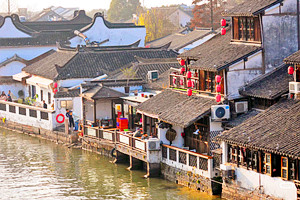 Zhujiajiao Water Town
Zhujiajiao Water Town
Located in the westernmost part of Shanghai, Zhujiajiao Water Town sits by the picturesque Dianshan Lake. Surrounded by interlaced rivers and canals, and crisscrossed with stone bridges, it is a typical water town in the south of the Yangtze River, earning itself the reputation of being the "Pearl of Jiangnan", the "Venice of Shanghai", and the "Hollywood of Shanghai's suburbs". The lake here, called Dianshan Lake, is a natural freshwater lake, with most of its eastern area within the boundaries of Zhujiajiao. Its size is dozens of times that of West Lake in Hangzhou. The reeds gently sway, waterbirds wander, and the ripples from paddleboats startle wild ducks, making you feel instantly removed from the hustle and bustle of the city, and your heart filled with serenity and joy.
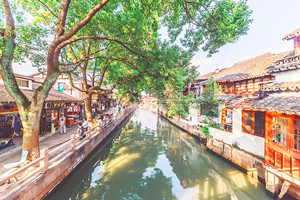 Zhujiajiao Water Town
Zhujiajiao Water Town
The scenery within the town is even more captivating. Numerous ancient bridges, standing the test of centuries of wind and rain, showcase the traces of Zhujiajiao's social development. The Fangsheng Bridge boasts a magnificent and exquisite design, being the largest existing five-arch stone bridge in Shanghai. Nine old streets and over a thousand houses are built along the river. Among them, North Street is lined with Ming and Qing dynasty architectures on both sides, once the residences of many wealthy families and literati. Merchants and vendors hawk their goods along the street, creating a lively atmosphere. As you wander through these alleys and lanes in Zhujiajiao Water Town, standing in front of the doorways and peering inside, you'll be greeted by the sight of old houses with white walls and dark tiles, along with intricately carved wooden doors and windows. Here, you can almost sense the living atmosphere left behind by the former residents, a serene and cozy ambiance that's indescribable.
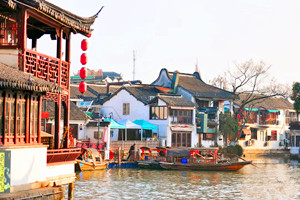 Zhujiajiao Water Town
Zhujiajiao Water Town
In several hundred-year-old Teahouses, elderly people sit and order a pot of tea, chatting while sipping and recounting tales of bygone eras. The Qing Dynasty Post Office, established during the reign of Guangxu, still operates, drawing many visitors who either seek to learn about its stories or send a postcard as a keepsake. As you stroll around the streets, you'll find coffee shops scattered everywhere, forming a unique "coffee trail" of this town. You can leisurely spend an afternoon by stepping into any one of these cafes. Moreover, you can discover various Jiangnan-style pastries in these streets, savoring the authentic "old flavors" of this town.
Here, there is no disturbance of towering skyscrapers, nor the hustle and bustle of modern cities. Falling in love with Zhujiajiao Water Town never has a single answer. Perhaps, once you arrive here, you will quickly find your own answer—this is a place that leave you unforgettable memories!
Highlights You Can't Miss
Qing Dynasty Post Office
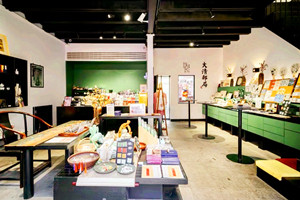 Qing Dynasty Post Office
Qing Dynasty Post Office
This post office, built during the Guangxu reign of the Qing Dynasty, is one of the earliest postal institutions in China. After a century of vicissitudes, it still stands proudly in the heart of this town, embodying the romance of "slow carriages and distant letters". Today, at the Qing Dynasty Post Office, you can listen to the history of postal services, experience the artistic life of Jiangnan, and even try your hand at making postcards. Alternatively, you can affix stamps and drop your postcards into the mailbox, sending them to your friends and family. If you're a coffee enthusiast, then you must try the newly launched rice soup coffee at the post office. Unlike other coffees, its unique preparation process involves blending slowly-cooked rice soup with coffee beans, infusing the aroma of rice into the coffee, attracting countless tourists to taste.
Fangsheng Bridge (放生桥)
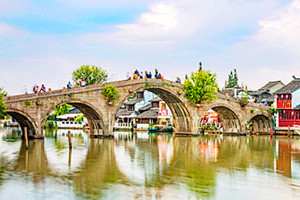 Fangsheng Bridge (放生桥)
Fangsheng Bridge (放生桥)
It is said that there are 36 ancient stone bridges still existing in Zhujiajiao Water Town, each with a unique design. Their bridge lengths, widths, and architectural styles are all different, blending perfectly with their surroundings. Among them, the most famous is the Fangsheng Bridge, spanning over the Caogang River, known as "The First Bridge in Shanghai". Built in the Ming Dynasty, this five-arch stone bridge is over 70 meters long. On the first and fifteenth day of every lunar month, monks hold release ceremony on the bridge, hence its name. In addition to the Fangsheng Bridge, Zhujiajiao also boasts the Fuxing Bridge, Zhonghe Bridge, City God Temple Bridge, and other ancient bridges. These bridges span the waterways, serving as witnesses to history, carrying cultural traces, and contributing to the unique charm of Zhujiajiao.
Kezhi Garden (课植园)
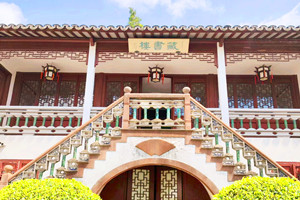 Kezhi Garden (课植园)
Kezhi Garden (课植园)
Established in 1912, Kezhi Garden is the largest manor-style private garden in Zhujiajiao. As the owner of the garden was surnamed Ma, the place is also known as "Ma's Garden". "Kezhi" implies "never forget to cultivate while studying". Therefore, the garden contains a library, rice paddies, fruit trees, and other elements, allowing visitors to appreciate the hardships of work. The landscape is refreshing and unconventional, with white walls, dark tiles, winding paths, and secluded corridors, captivating the hearts of visitors. The windows, stone carvings, and pavilions all incorporate the architectural styles of the Ming and Qing dynasties. To create this ideal garden, the owner visited many famous gardens in the south of the Yangtze River and imitated the lotus pool and zigzag bridge of the Yu Garden, as well as the rockeries of the Lion Grove Garden in Suzhou, integrating their essence. Standing in the garden, you can enjoy the rich ancient charm.
City God Temple (城隍庙)
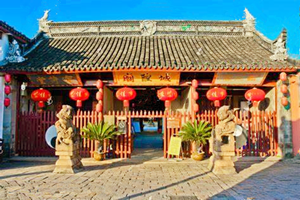 City God Temple (城隍庙)
City God Temple (城隍庙)
Located on Caohe Street in the town center, the City God Temple has a history of over 200 years and once served as the palace for the town god of Qingpu. One of the most interesting features outside the temple gates are the pair of sturdy stone lions on either side. Unlike the stone lions in other places, the ones at the City God Temple are less intimidating. They embrace embroidered balls, adding a sense of spirituality and adorability. Inside the main hall, statues of the city god and his wife are enshrined. Both of them have benevolent expressions and appear kind. Below the main beam hangs a horizontal inscribed board, which is said to have been bestowed by the Qianlong Emperor in Qing Dynasty when he traveled south to the Yangtze River region.
North Street (Bei Dajie)
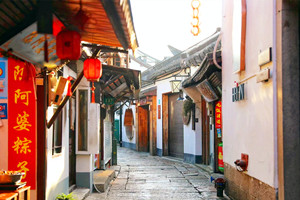 North Street (Bei Dajie)
North Street (Bei Dajie)
Zhujiajiao has nine long streets, among which the most famous is the North Street, which has a history of over 400 years and is known as "The First Street of Ming and Qing Dynasties in Shanghai". Despite its name Bei Dajie, the street is only 2-3 meters wide, bustling with people and lined with shops. The two-story buildings along the street, styled in the Ming and Qing dynasties, are a sight worth seeing. Most of their first floors are shops, while the second floors are residential homes. Residents can push open their windows to chat with neighbors in the nearby building or pass items to each other. The ancient street runs along the river, winding in an "S" shape. From any point on the street, your sight does not exceed 100 meters, giving a sense of profound mystery. There are still century-old brands such as "The First Teahouse in Jiangnan" preserved on the street, which witness the past and present of this town. Here, you are surrounded by delicious food at every step, and you can fully enjoy both eating and shopping as you stroll from one end of the long street to the other, which is a unique experience.
Top Things to do in Zhujiajiao Water Town
Boat Cruise to admire beautiful Scenery
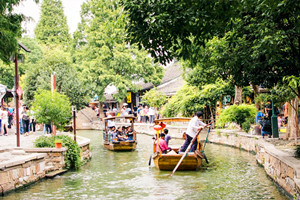 Boat Cruise
Boat Cruise
Some say that a visit to Zhujiajiao Water Town must include a ride on a boat (akin to a gondola in Venice) along the Caogang River. Sitting in the boat, you can listen to the rhythmic paddle sound of the oarsman, admire the scenery along the riverbanks, capture moments with photographs, or whisper sweet nothings to your beloved. This unique scene brings joy and captivates the heart. Perhaps only in this way can you truly feel the romantic sentiment of "The boat floats gracefully on the water, and the passengers wander as if in a painting".
Watch Pingtan Opera & Taste Tea
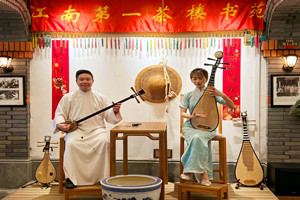 Watch Pingtan Opera
Watch Pingtan Opera
Upon arriving at the water town, you must visit a Teahouse to enjoy a cup of fragrant tea and nibble on some traditional Chinese snacks. Listening to the melodious and graceful Pingtan Opera (a type of Chinese traditional storytelling performance), you can savor a whole day of leisure. Zhujiajiao Water Town boasts two renowned "sacred places for Tea tasting": Apo Teahouse and Jiangnan No.1 Teahouse. Enjoying the gentle breeze blowing along the Dianpu River, sipping tea by the river, admiring the reflections of the arches of the Fangsheng Bridge, and watching boats slowly passing under the bridge is indeed a delightful experience. The branches of the pomegranate tree, which have been resiliently growing between the gaps of the stone for centuries, gently sway in the wind. This moment, this scene, the bustle belongs to you, and the scenery of Jiangnan also belongs to you.
Try Local delicious Cuisine
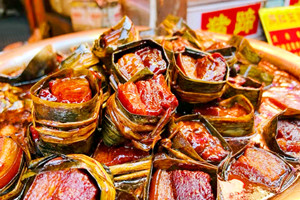 Zha Rou (Wrapped Meat)
Zha Rou (Wrapped Meat)
When visiting Zhujiajiao, Zha Rou (Wrapped Meat) is one of the must-try delicacies. With a long history, the Wrapped Meat is renowned for its "beautiful color, fragrant taste, soft and glutinous texture". This dish is made from boneless pork leg with skin, wrapped in bamboo leaves and then tied before cooking, thus earning its name Zha Rou. The tighter the meat is tied, the more chewy the texture becomes, resulting in an unforgettable taste with bamboo aroma.
Travel Information
Location: 36 Meizhou Road, Qingpu District, Shanghai
Open hours: All Day Long
(8:30am--16:30pm for some attractions such as Kezhi Garden)
Recommended visiting hours: half to one Day
Admission: Free for entry (tickets for some attractions)




































